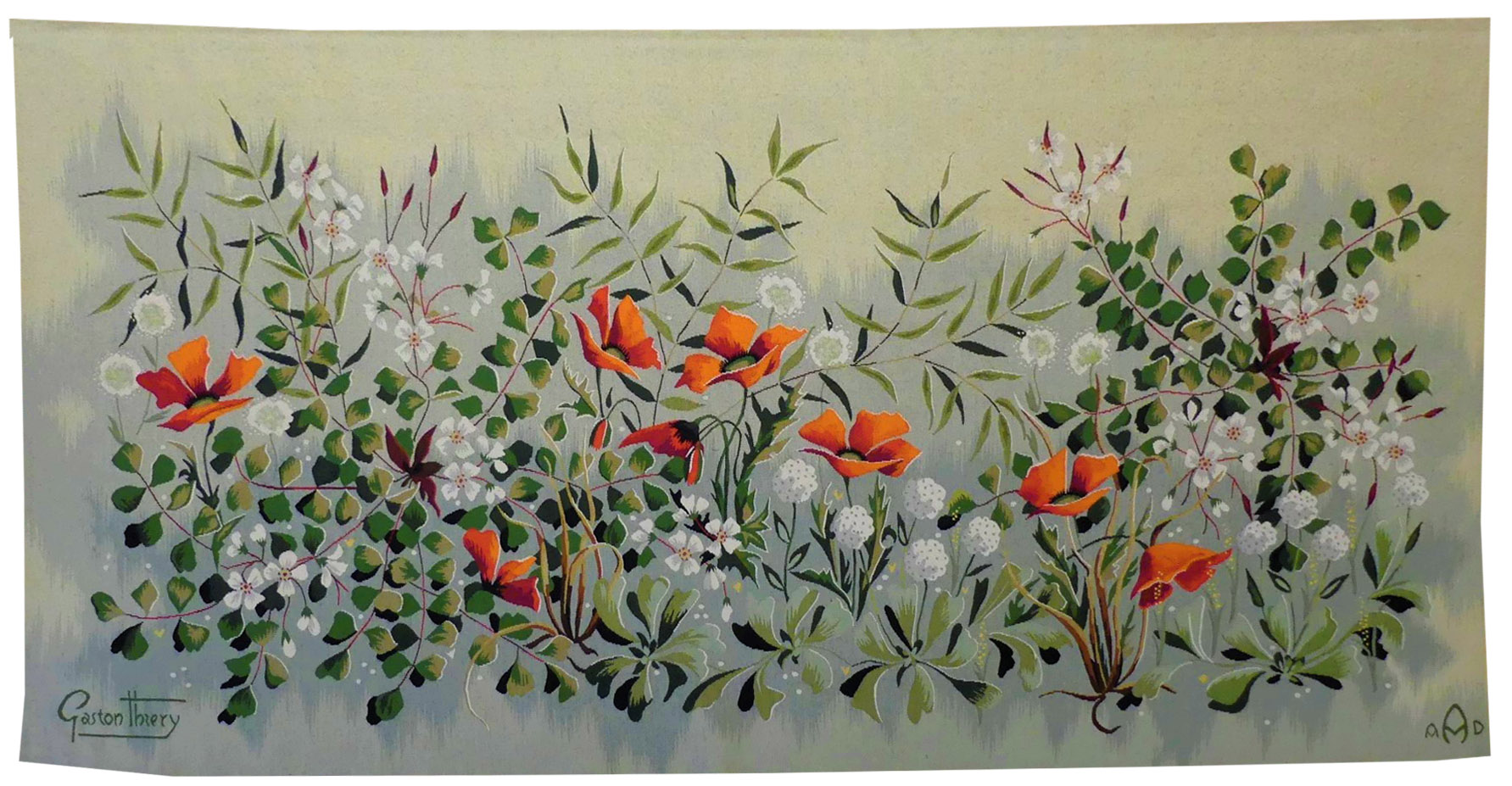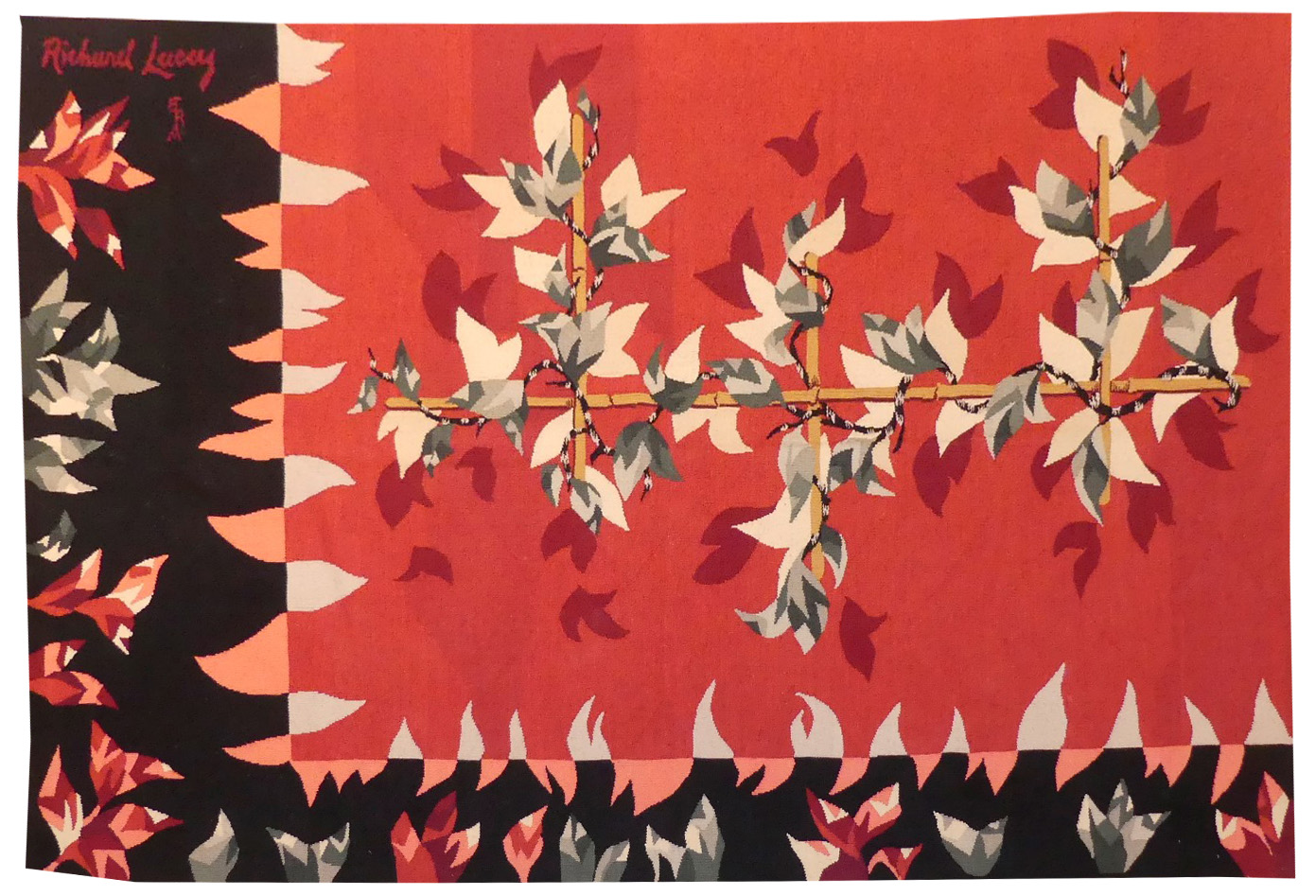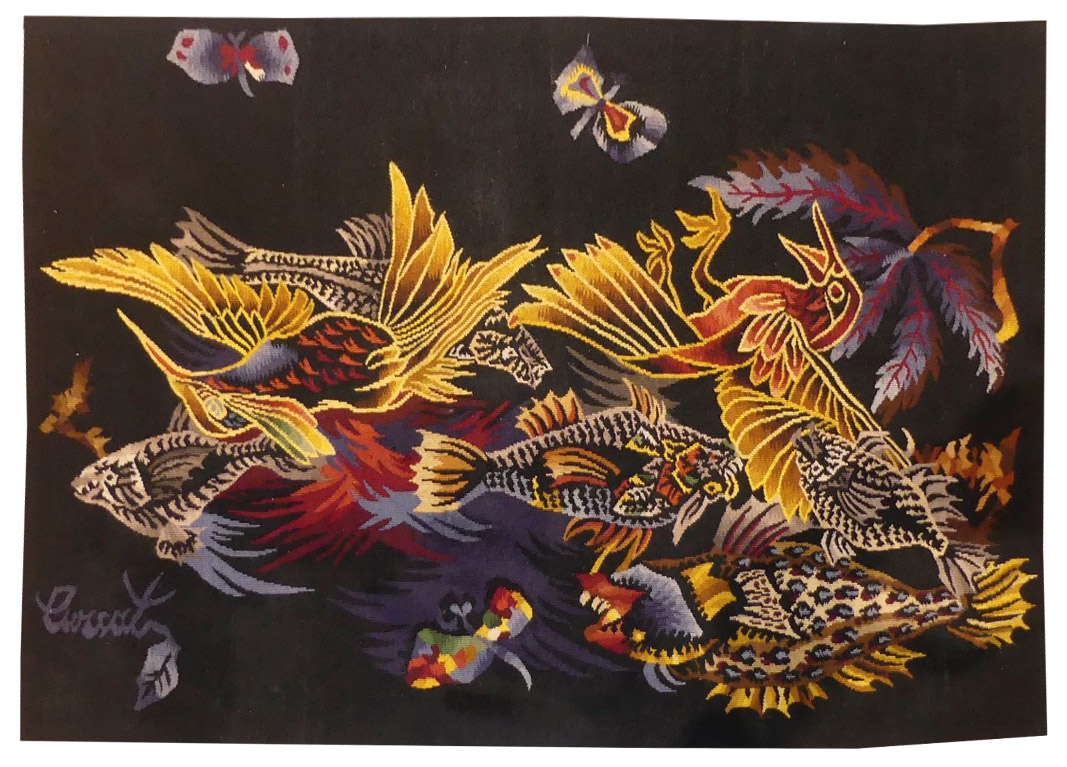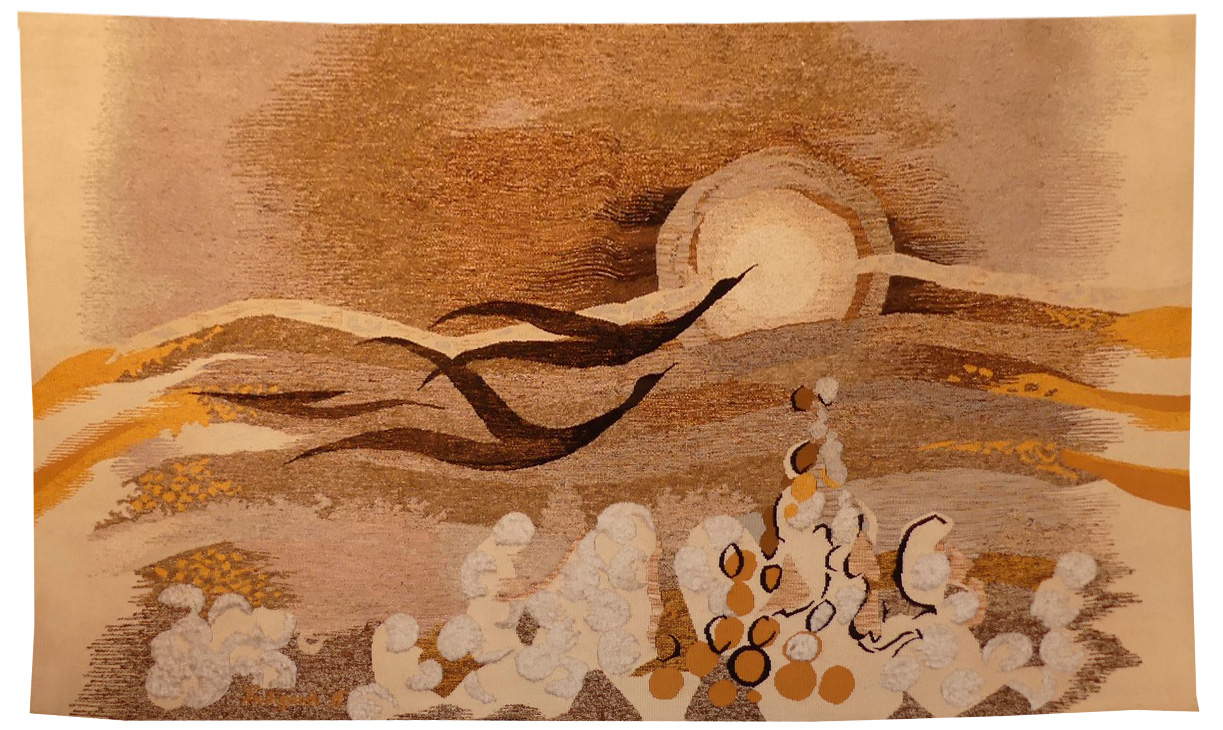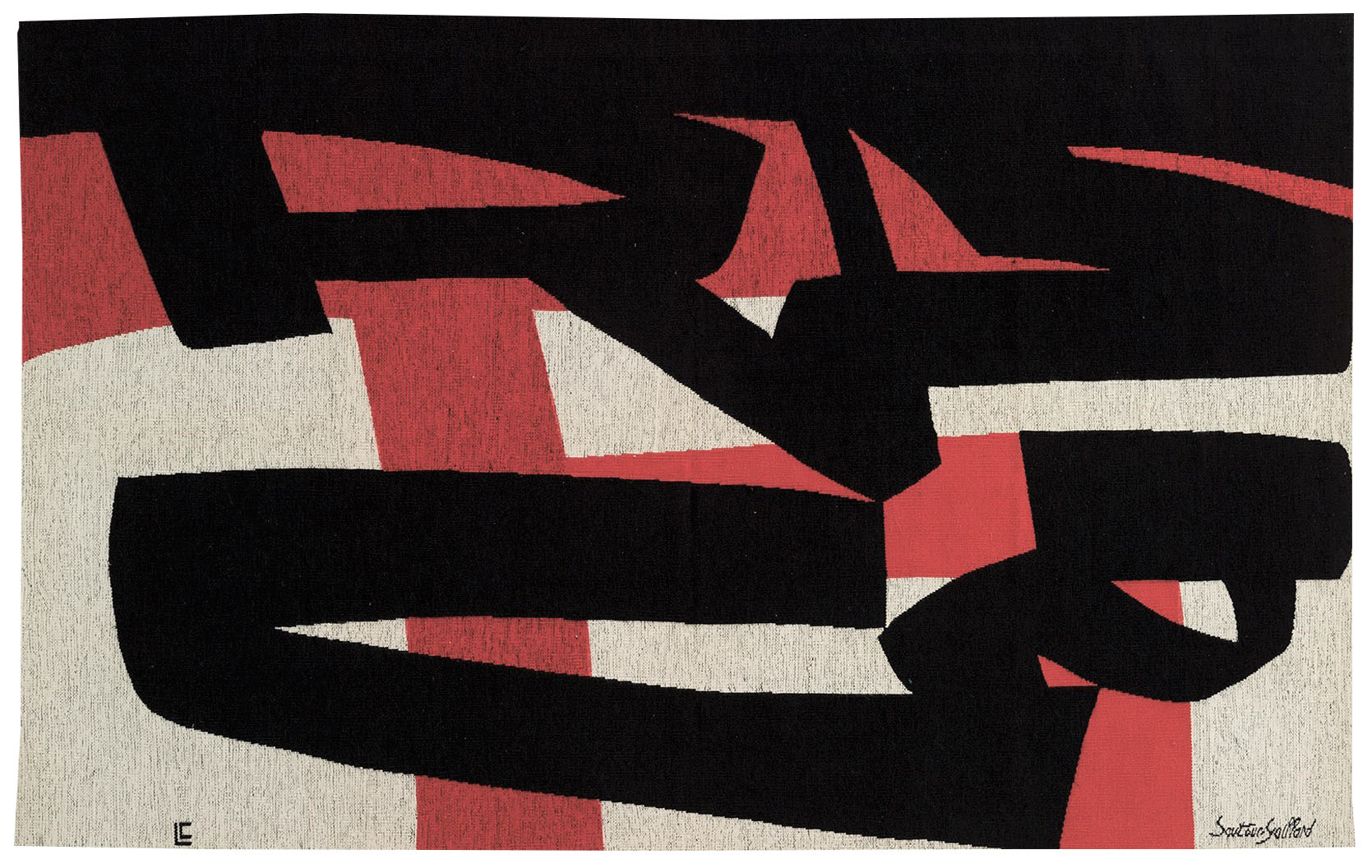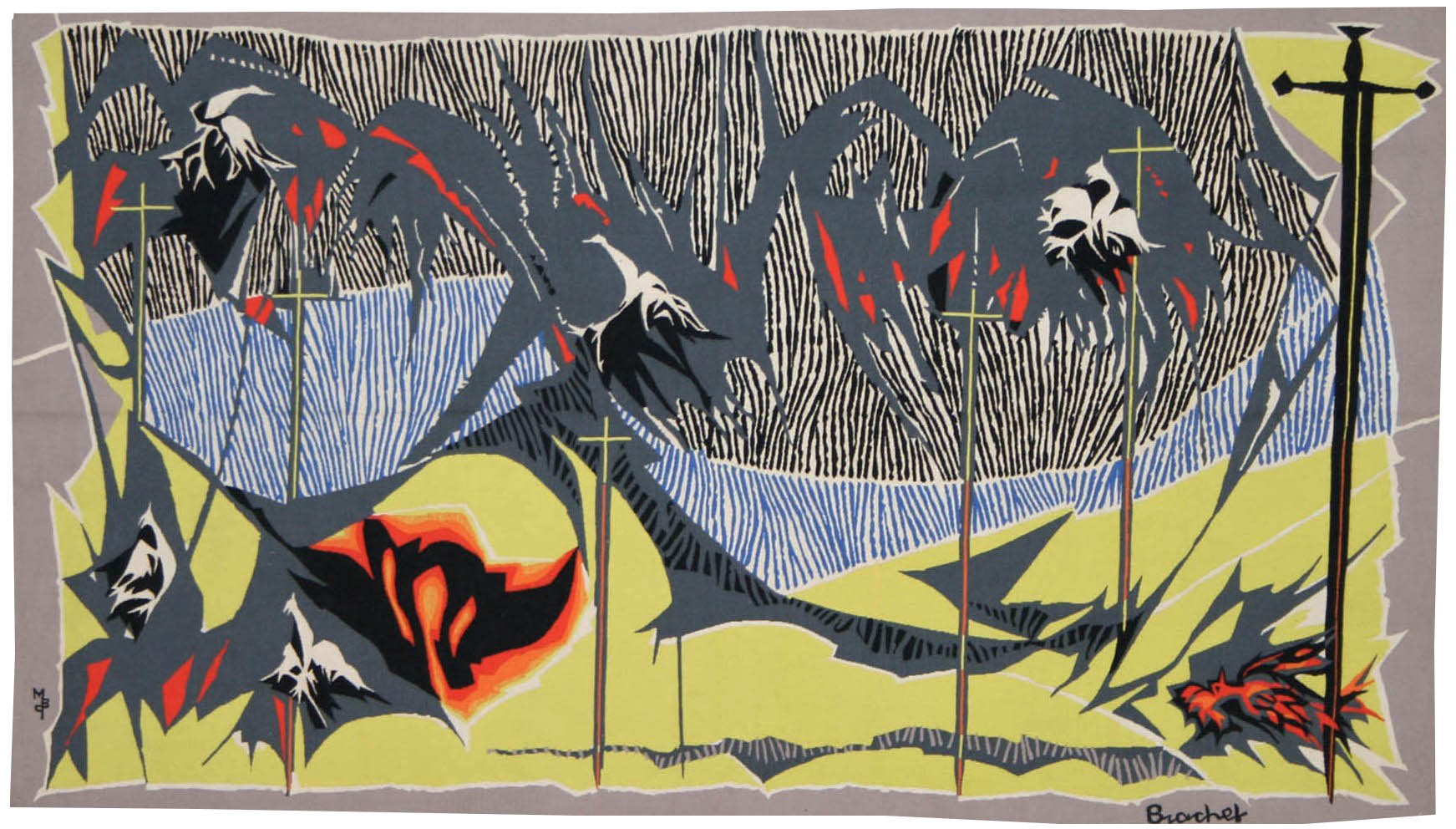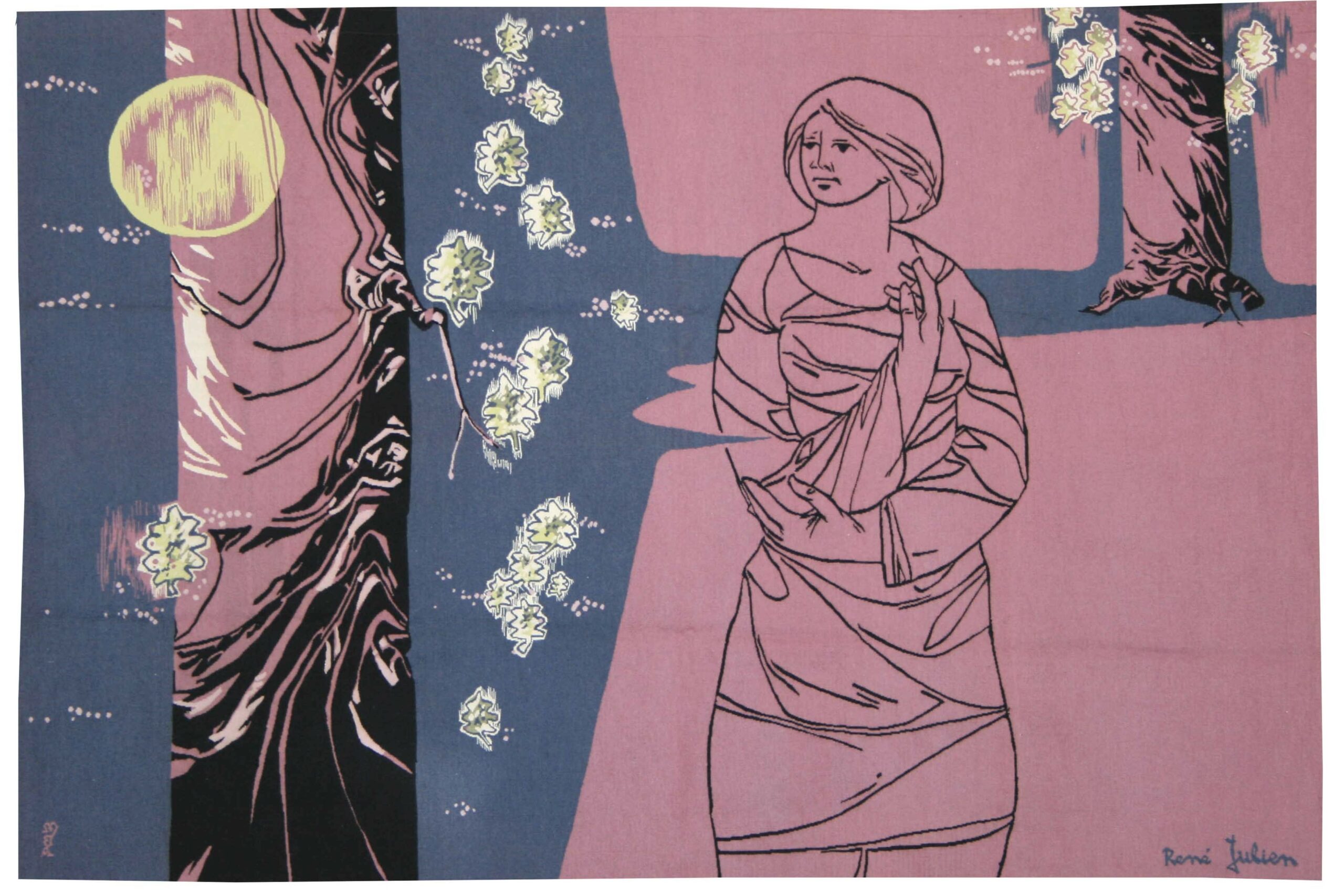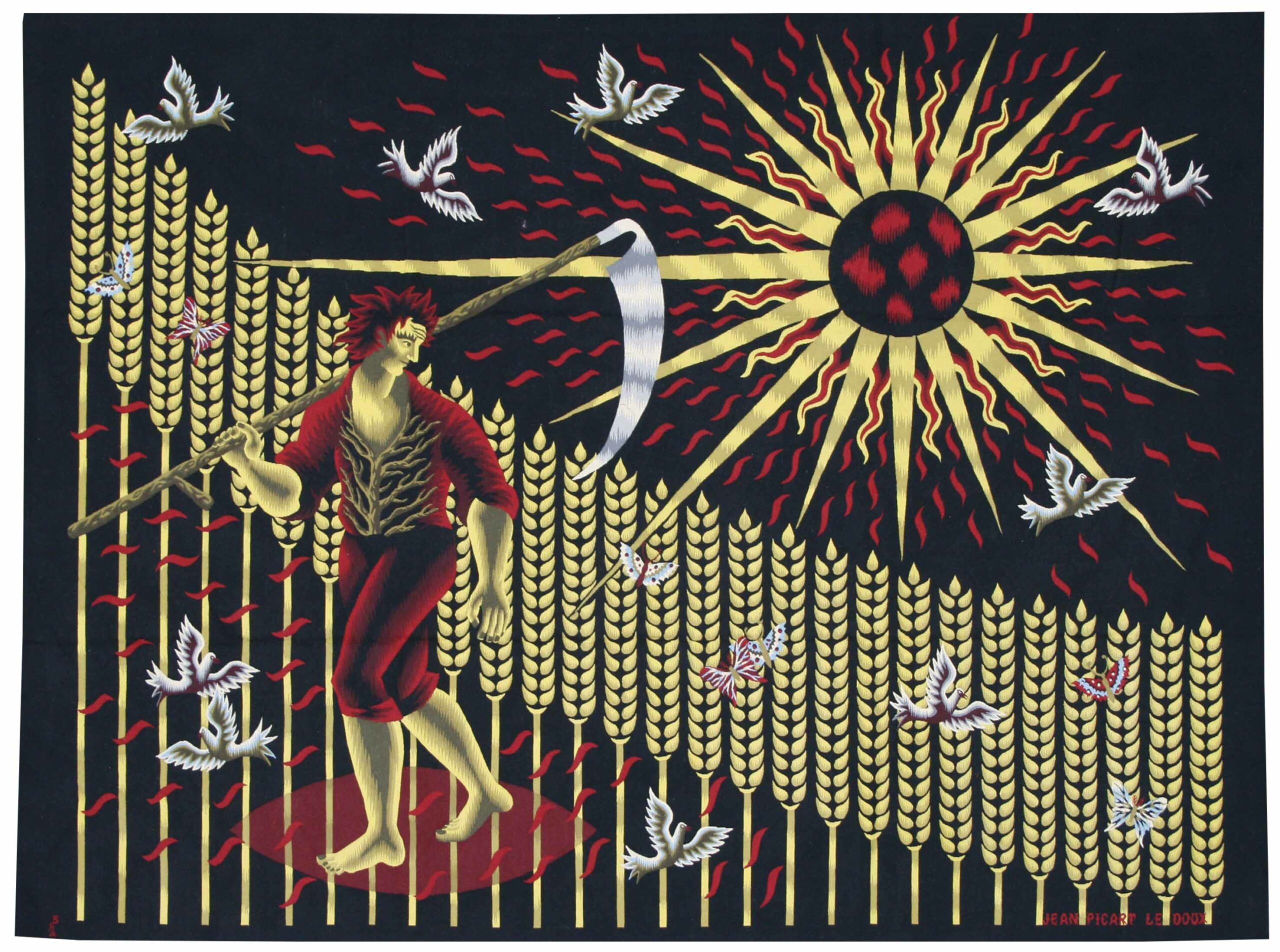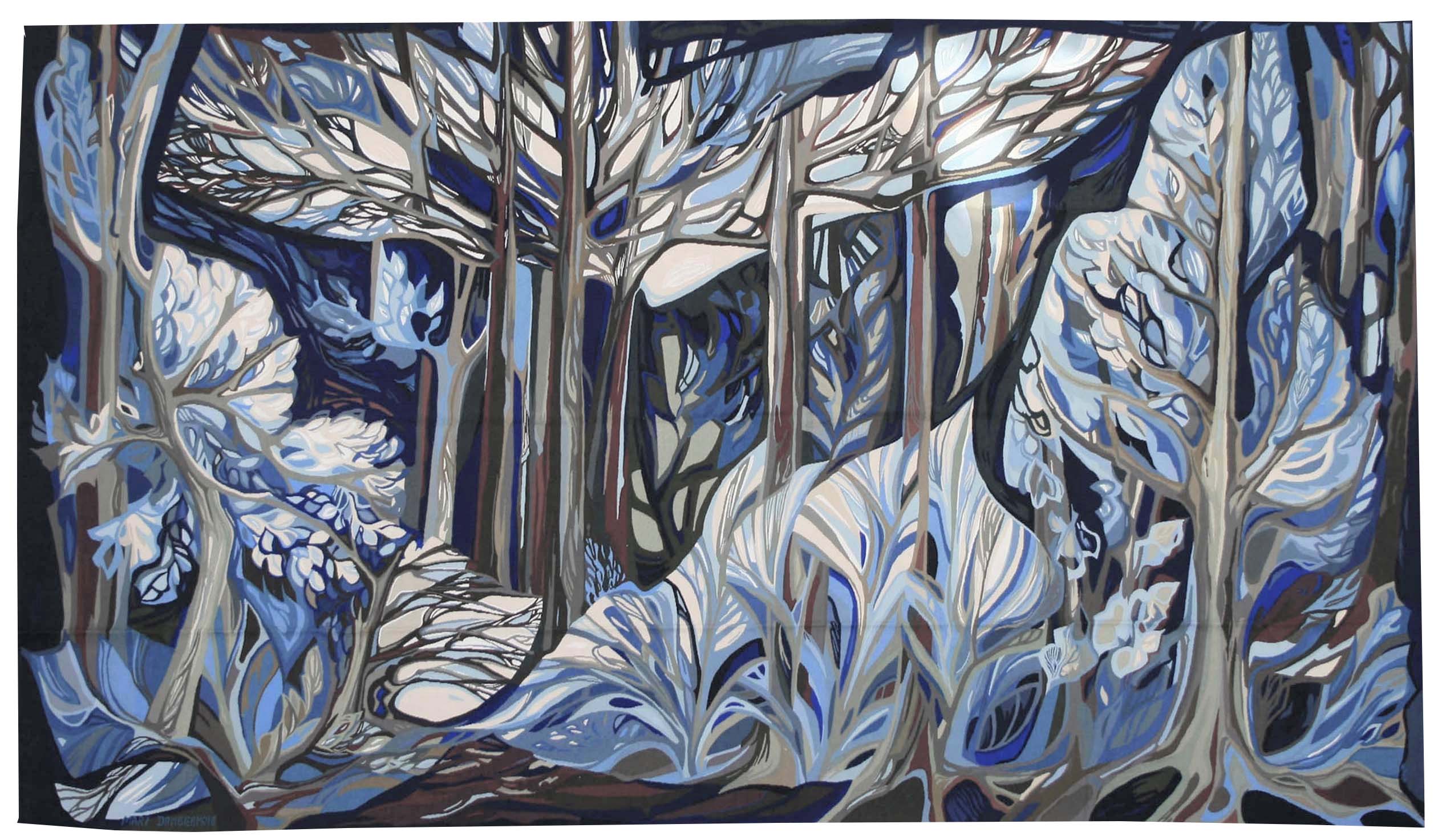Kalinka
Aubusson tapestry woven in the Andraud workshop.
With label, n°4/6.
1980.
Established in the Creuse region of France, he started working on tapestries in 1965 with the Andraud workshop for whom he designed cartoons inspired by the local flora, in a decorative style which can be situated somewhere between that of Dom Robert and Maingonnat, a world away from his landscape paintings which were strongly influenced by the impressionists.
The title of this piece, which will be evocative to lovers of folk-song, is the name (but in Russian !) of the subject illustrated : kalinka meaning guelder-rose.


